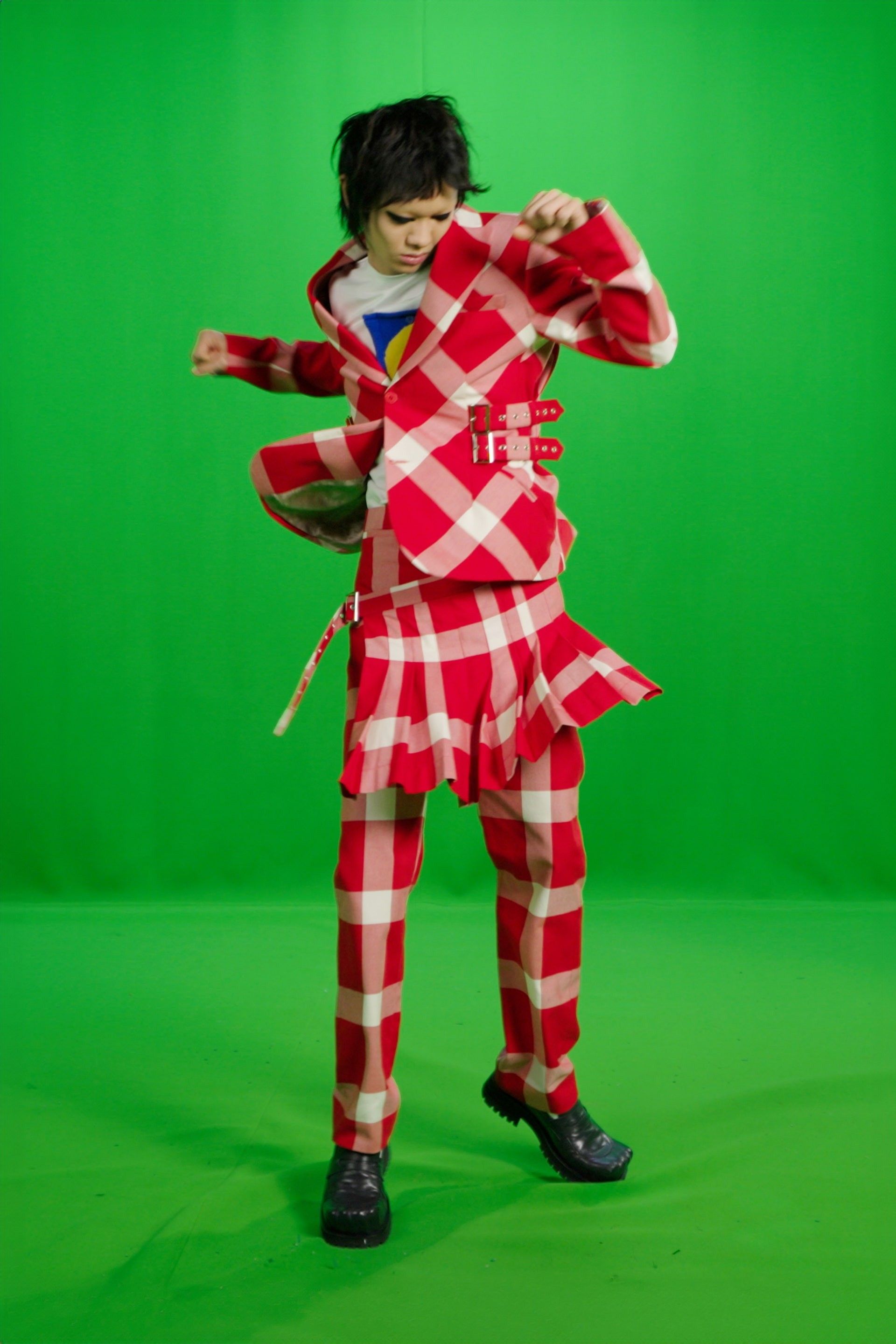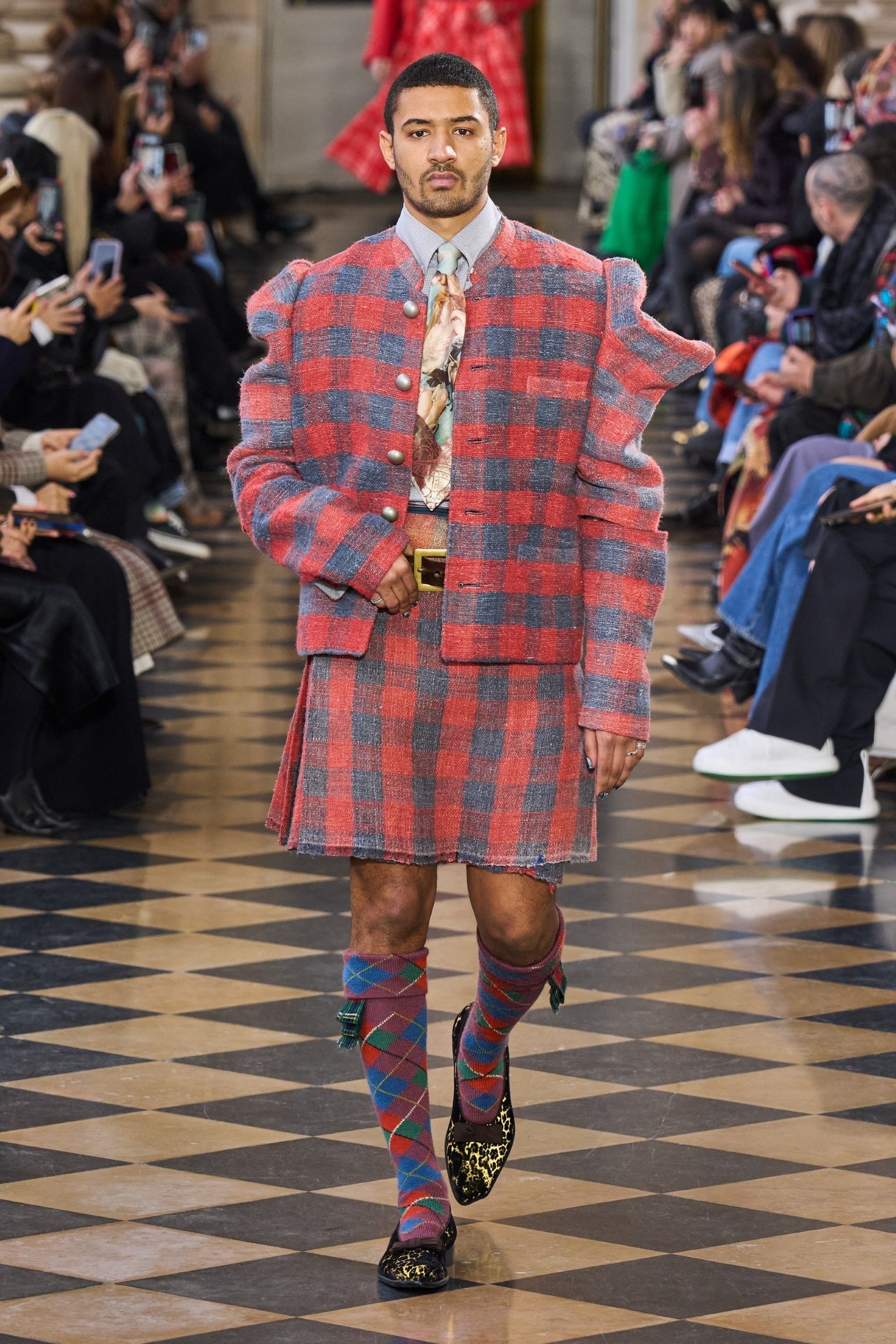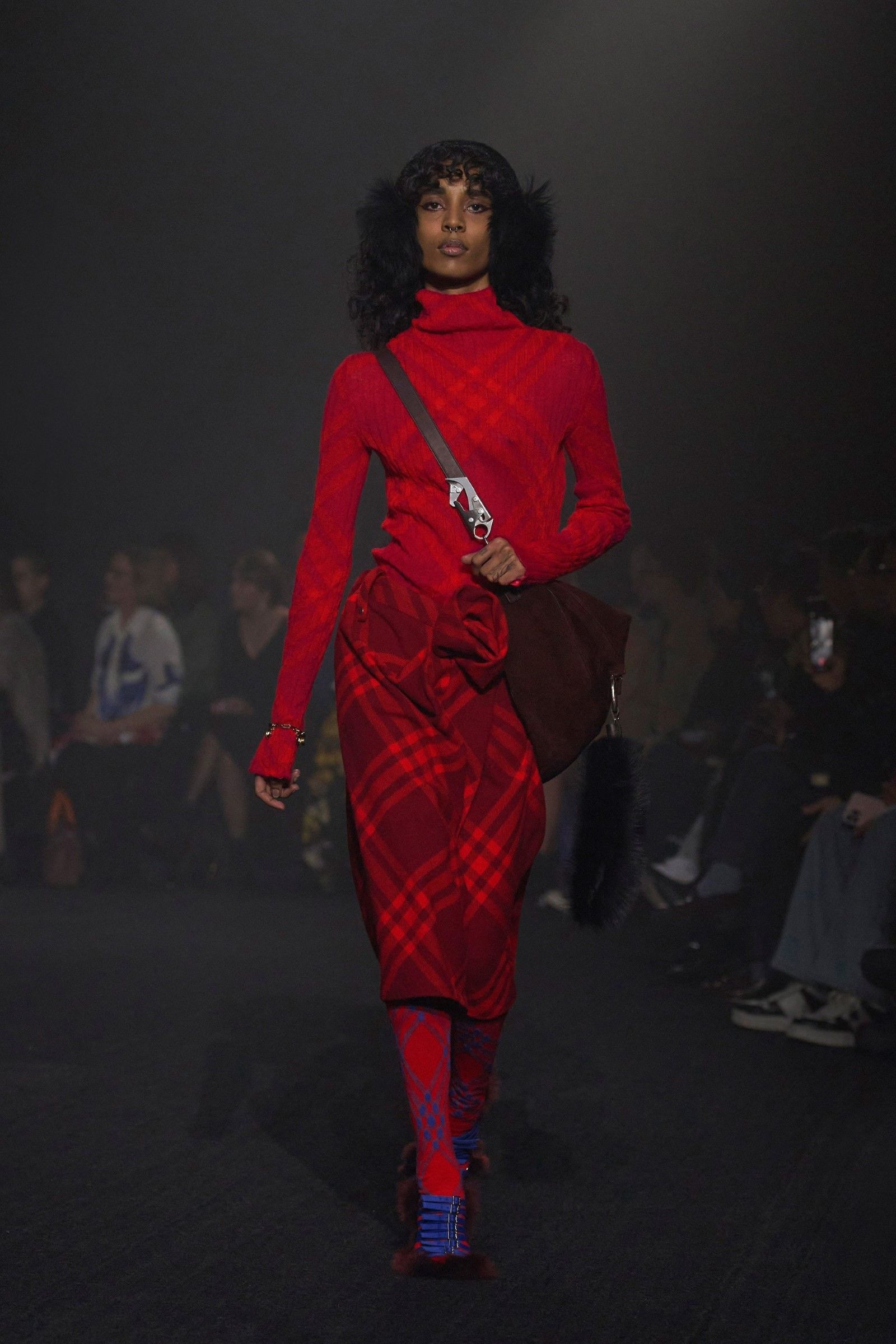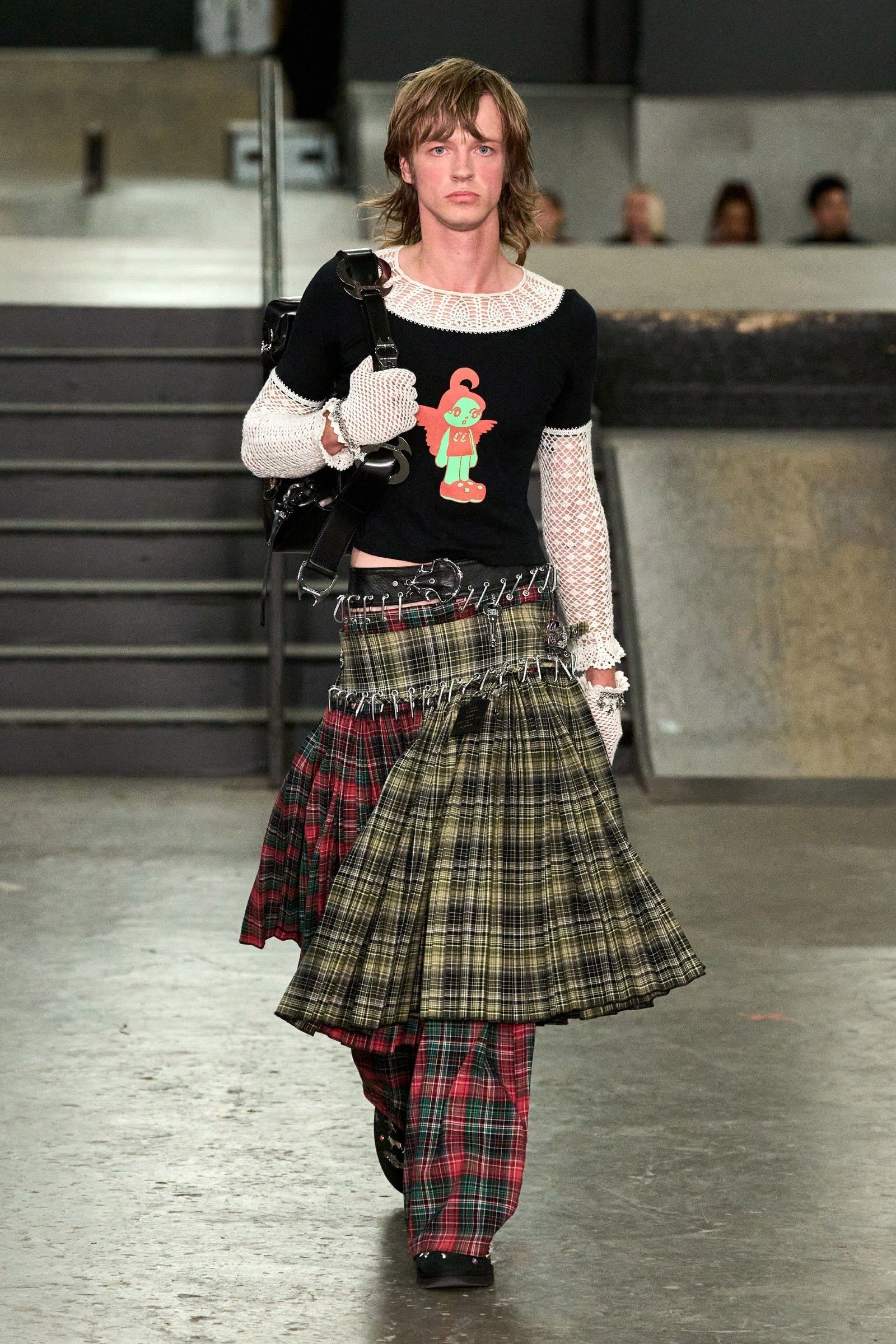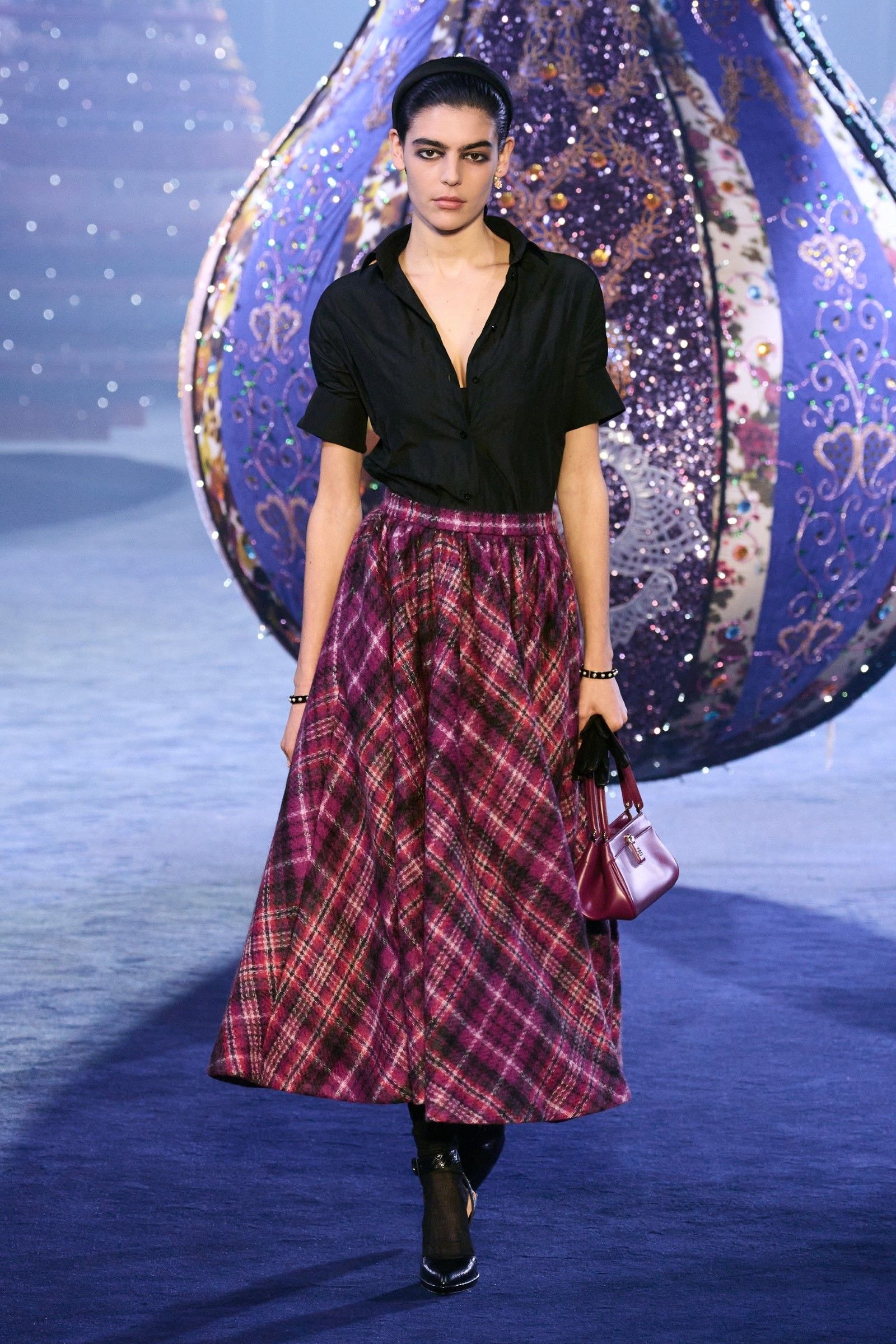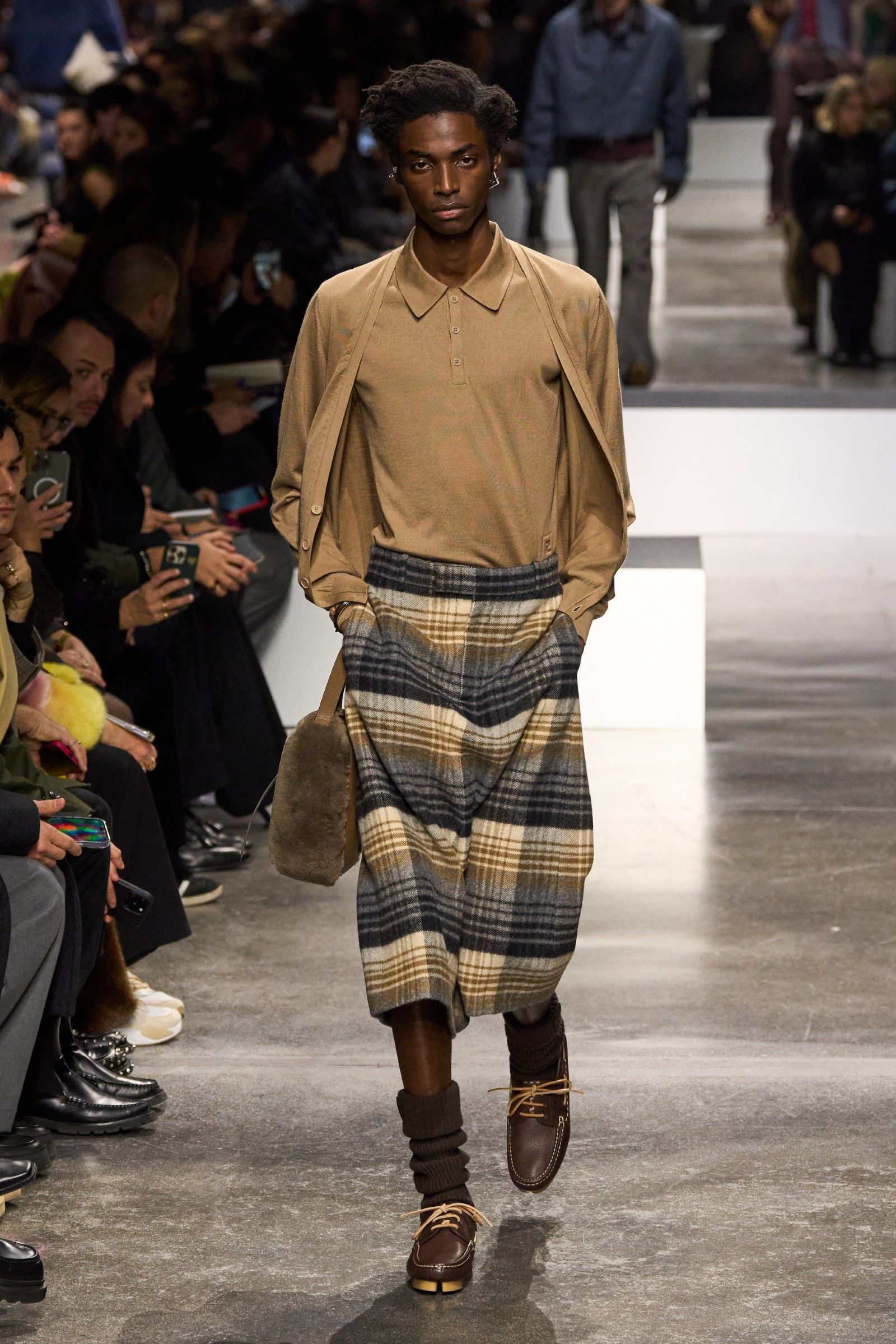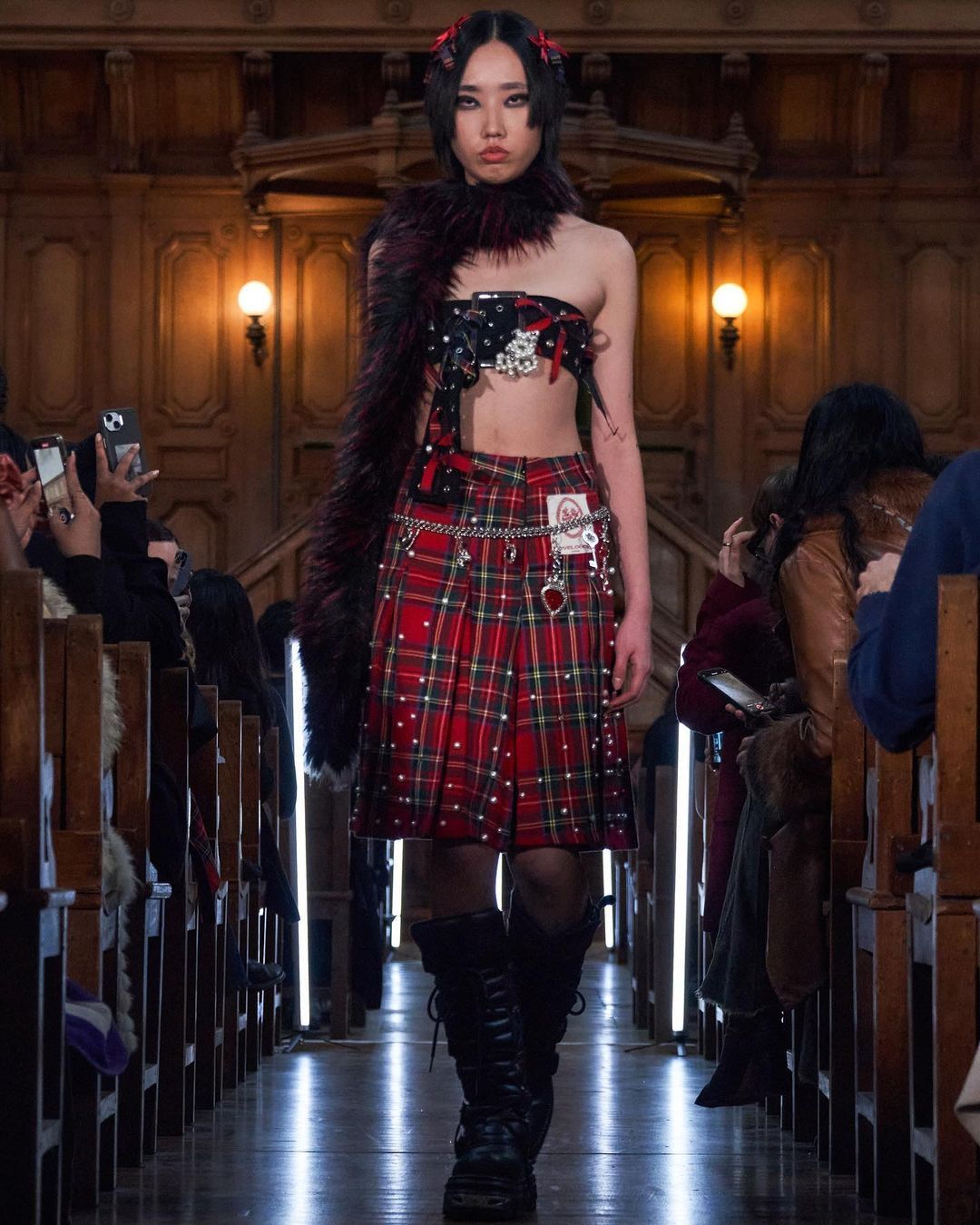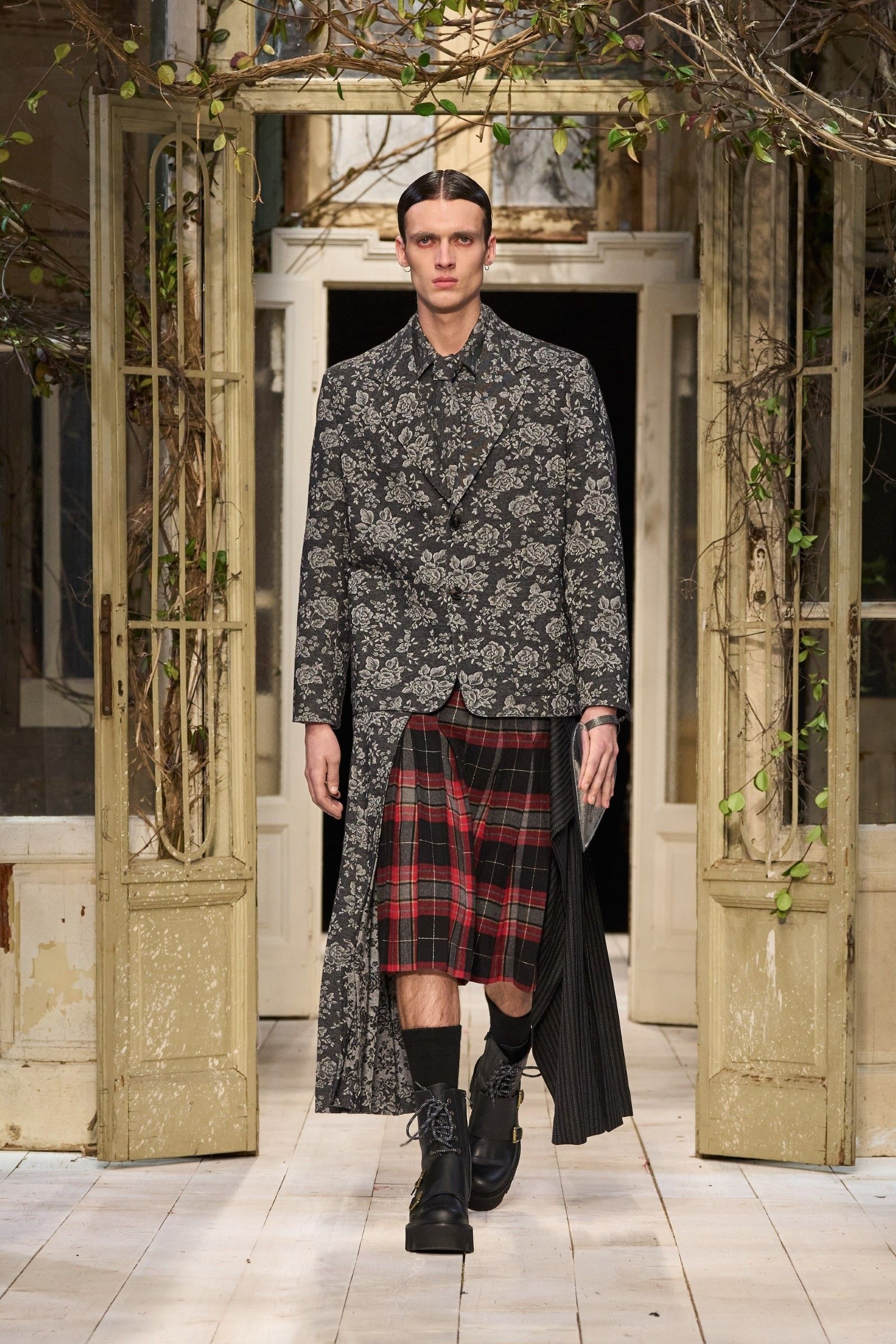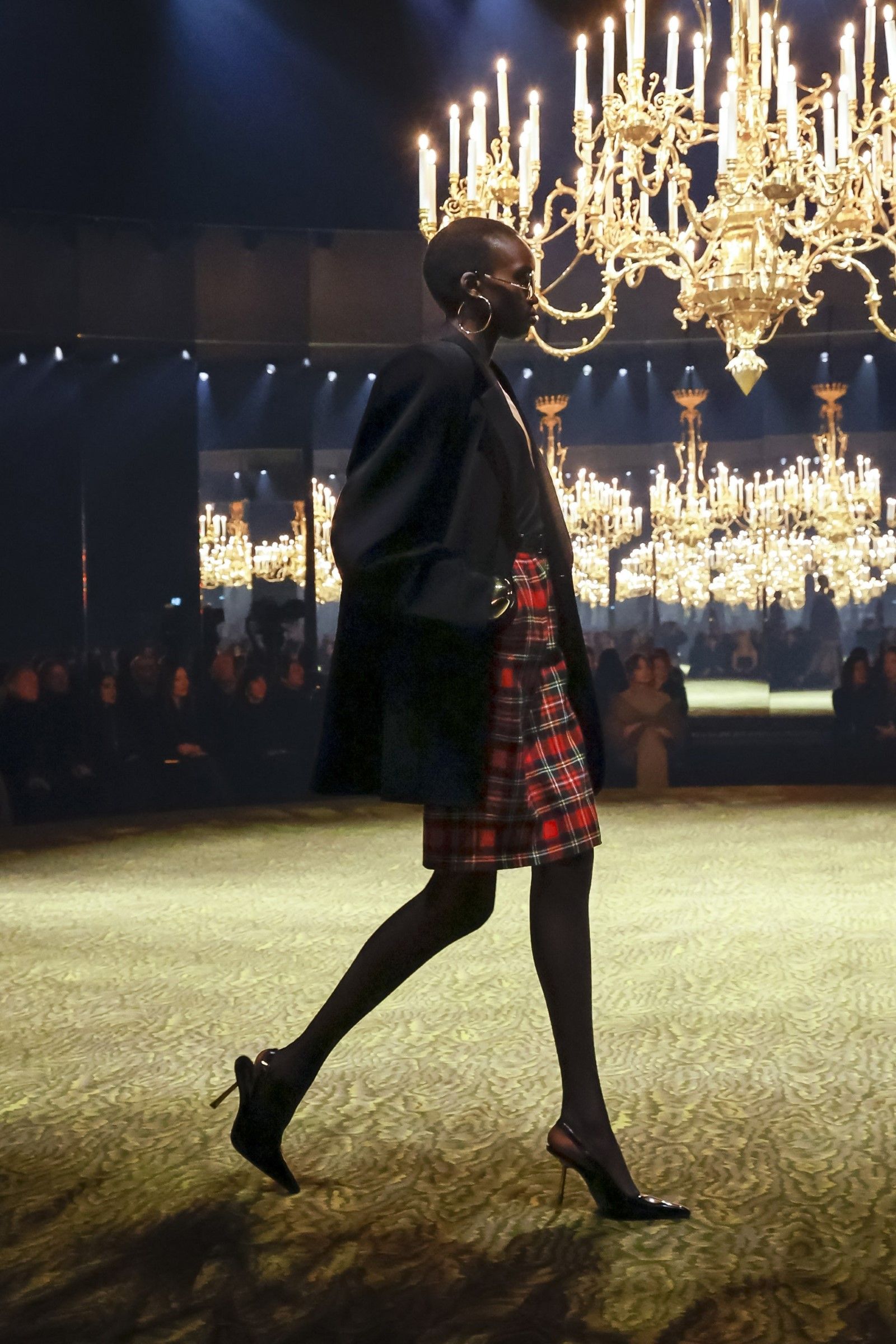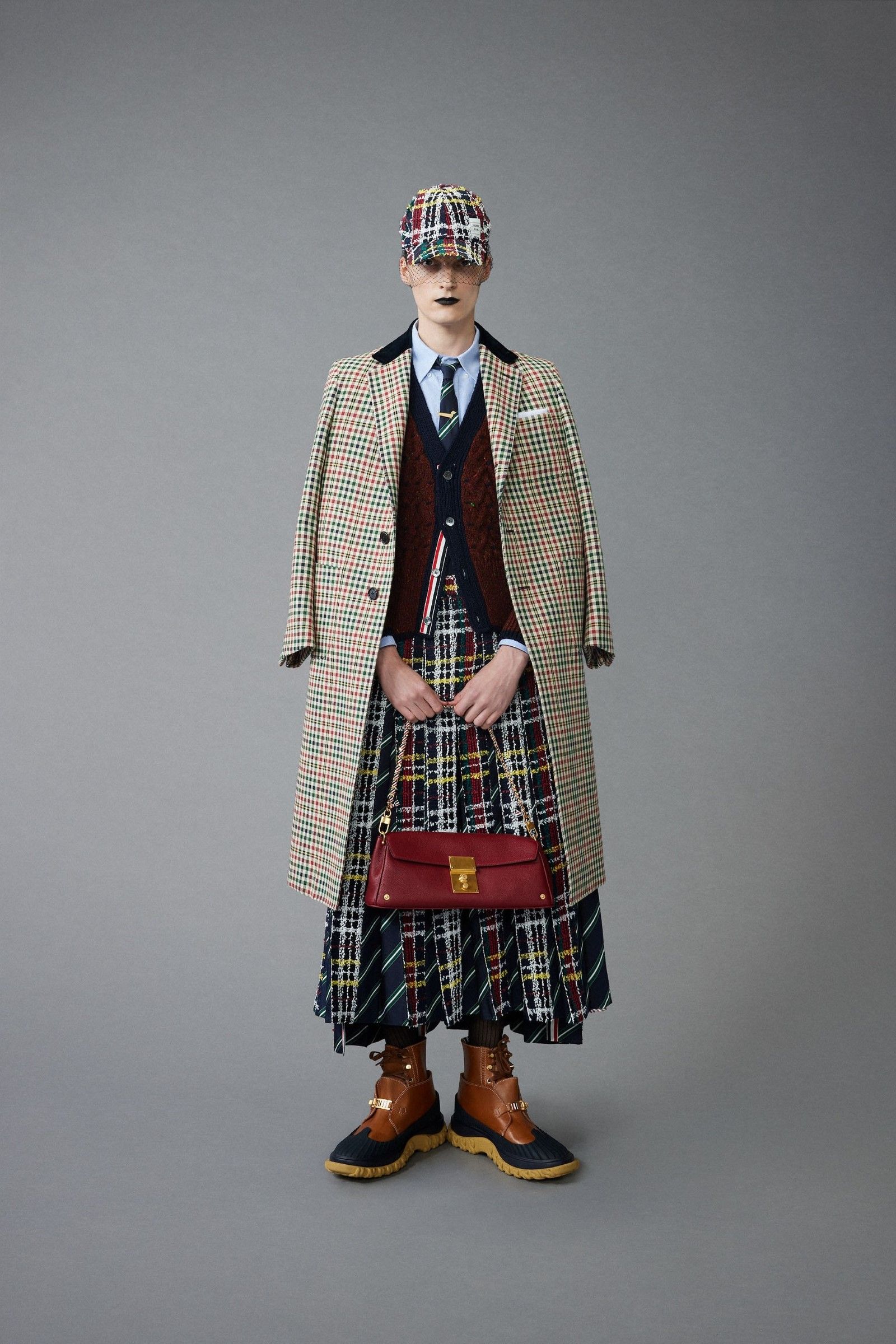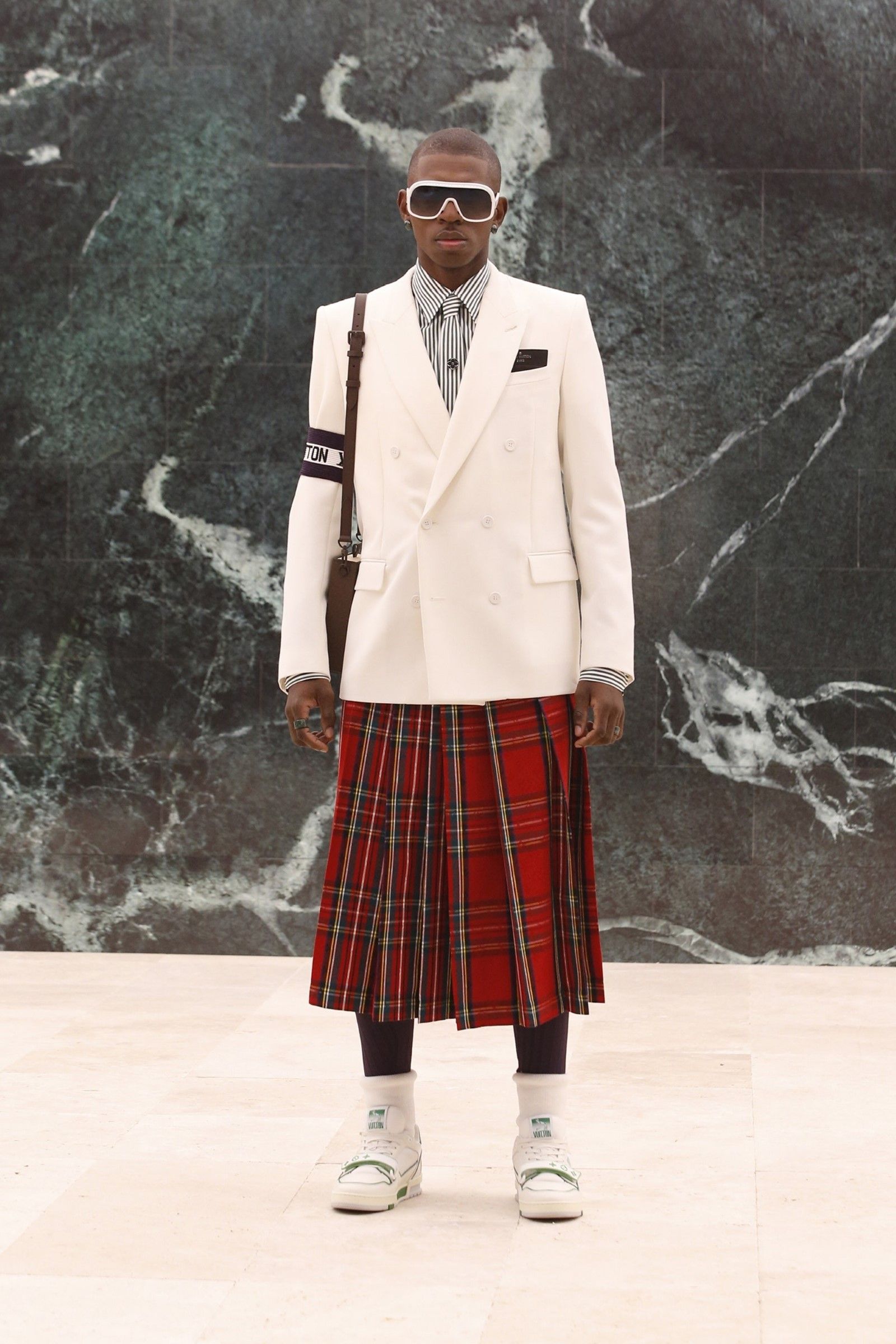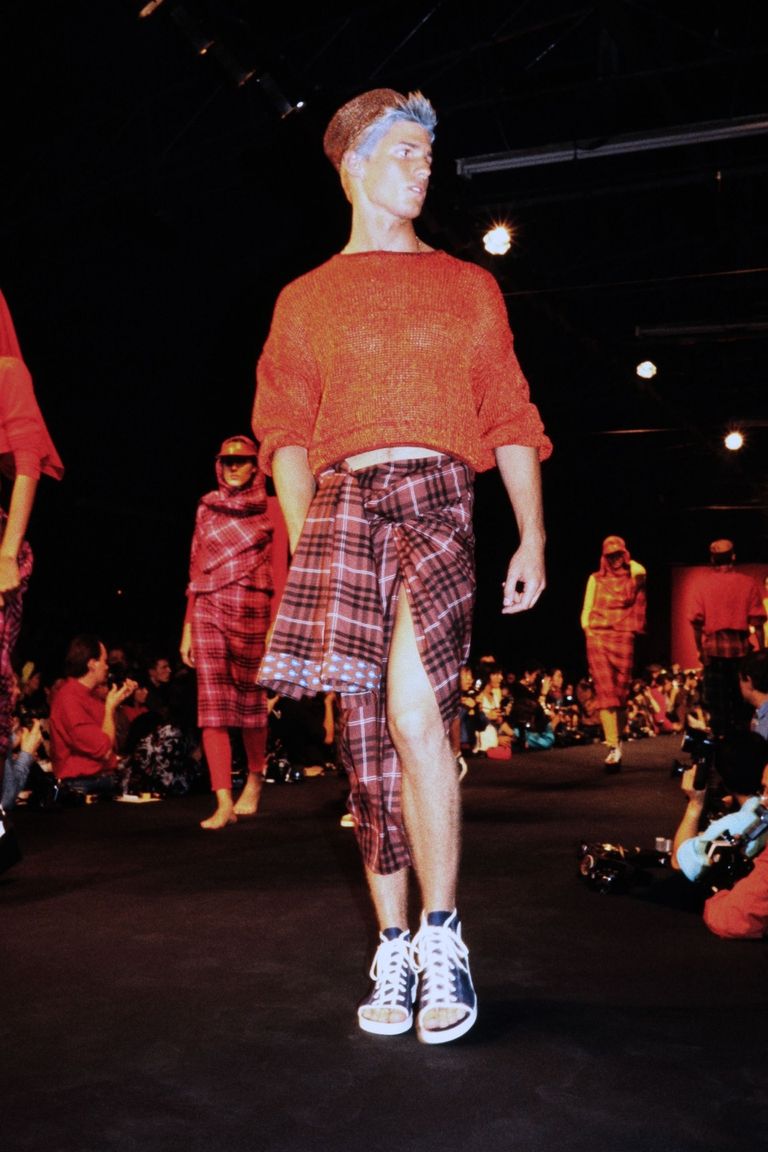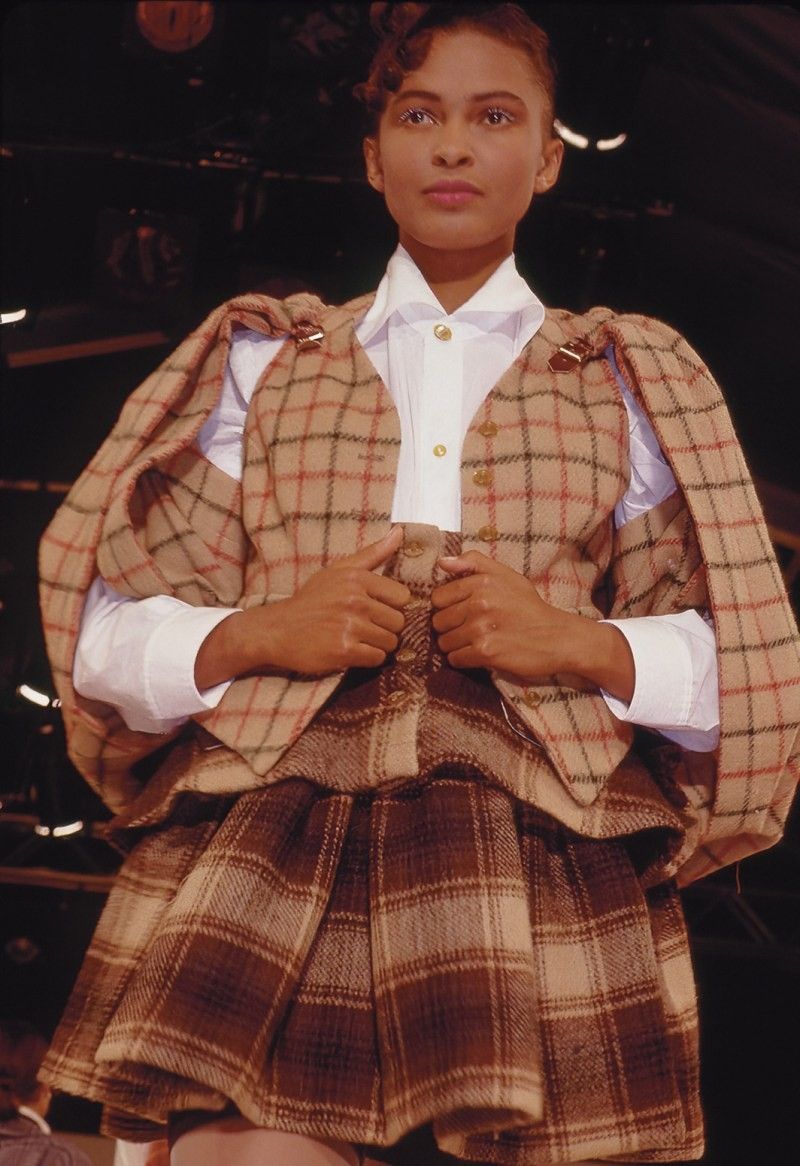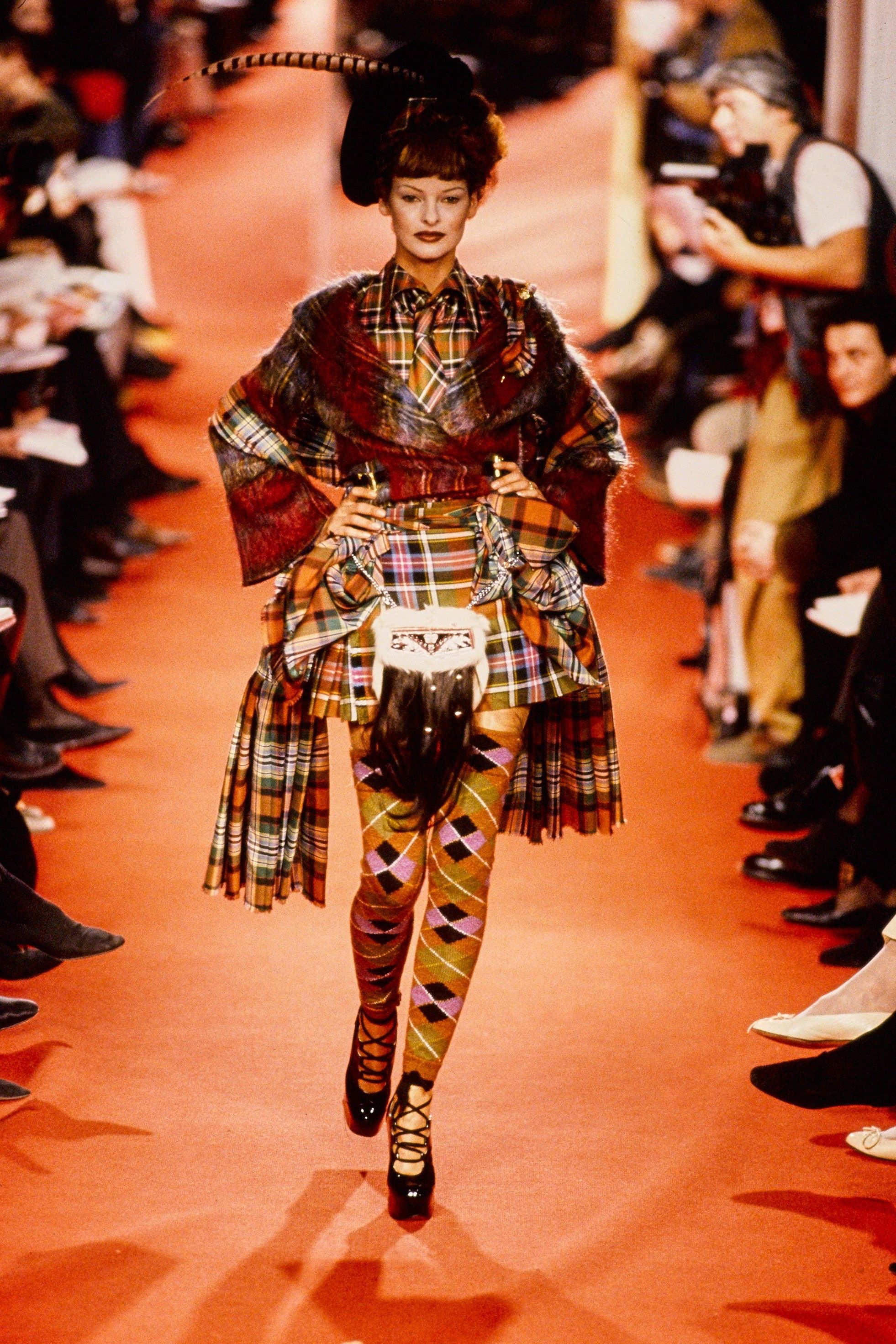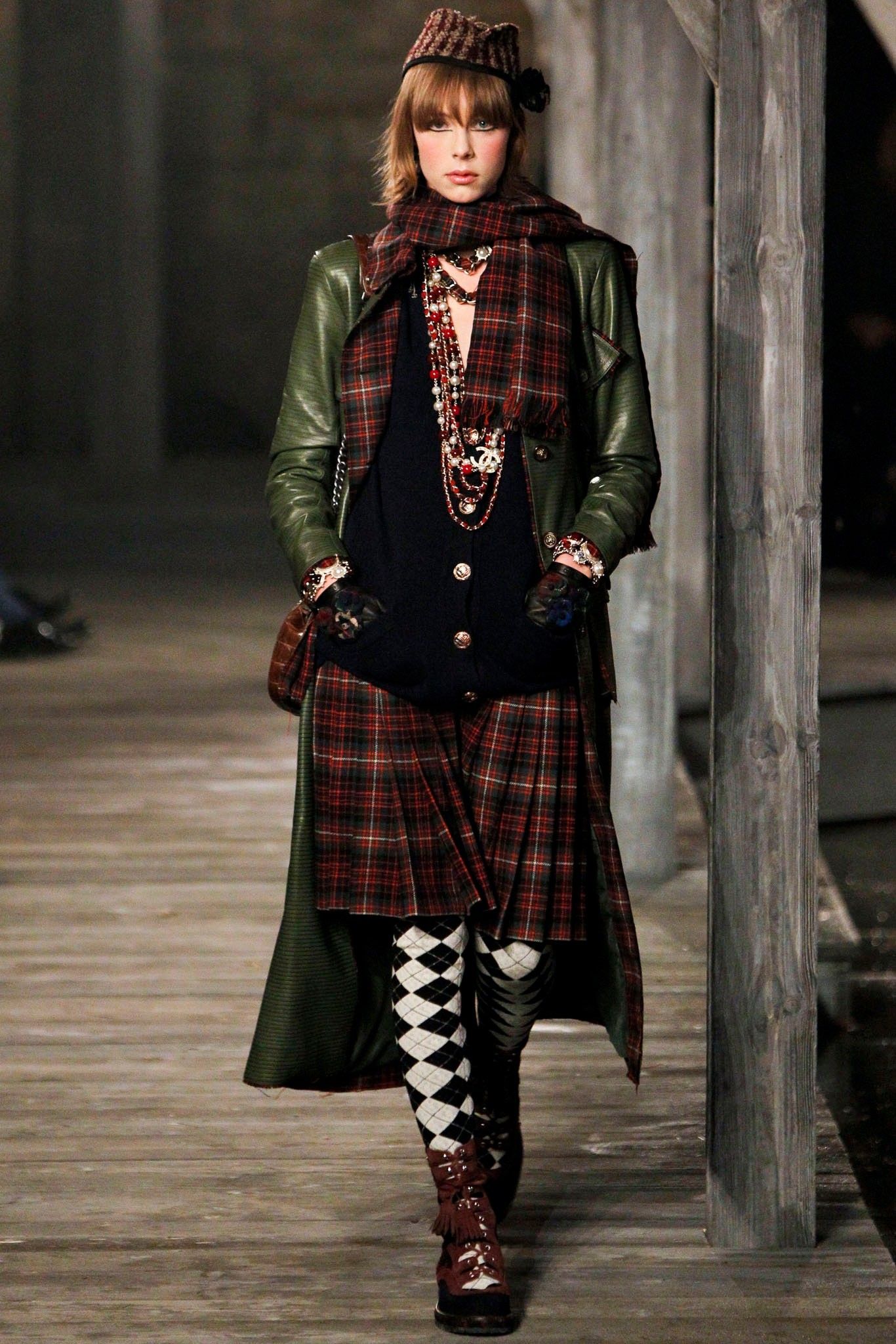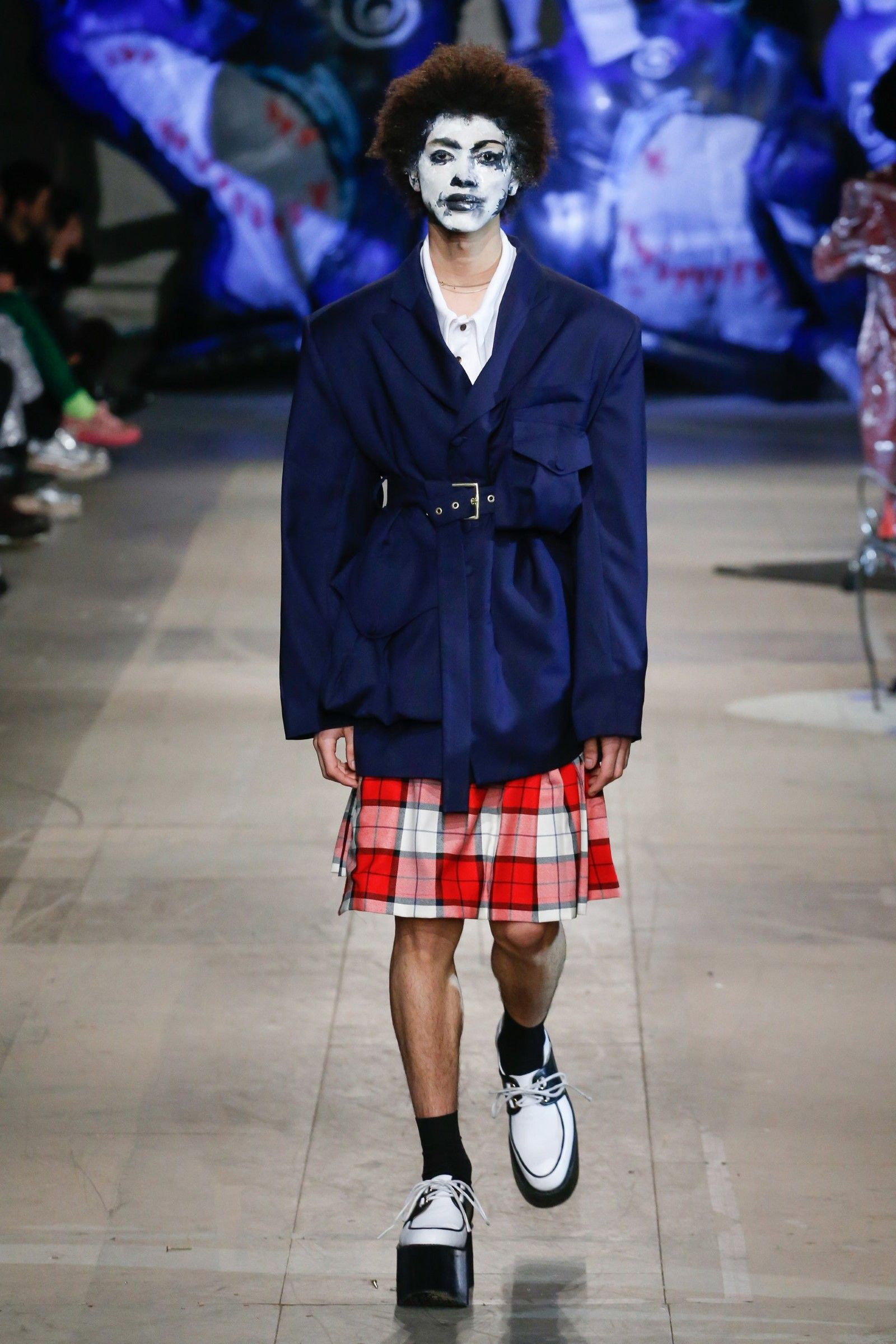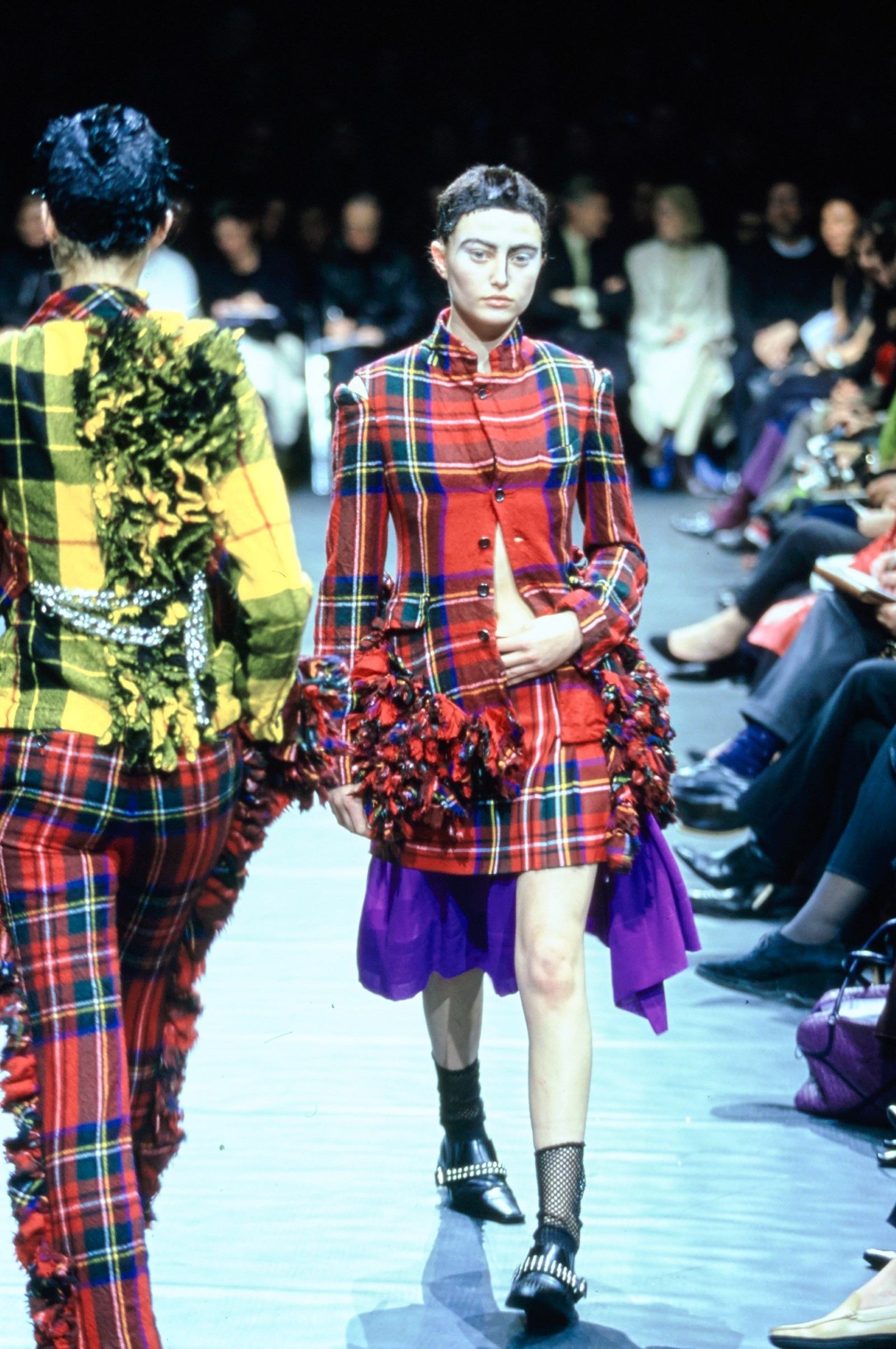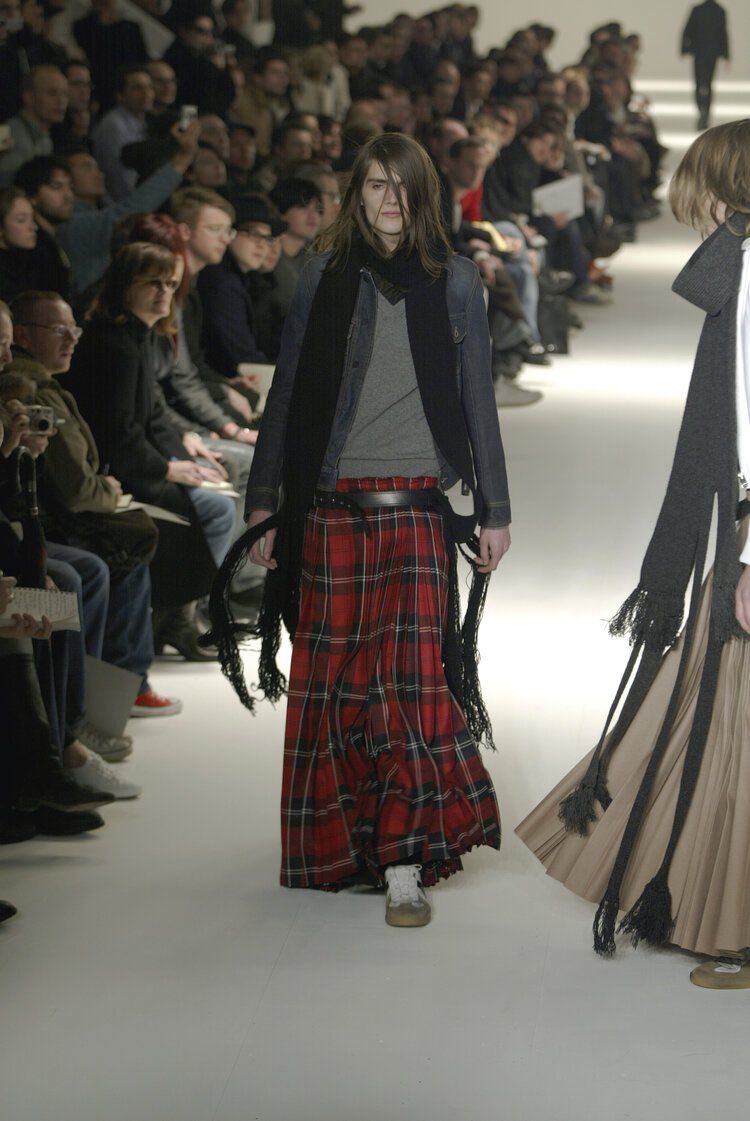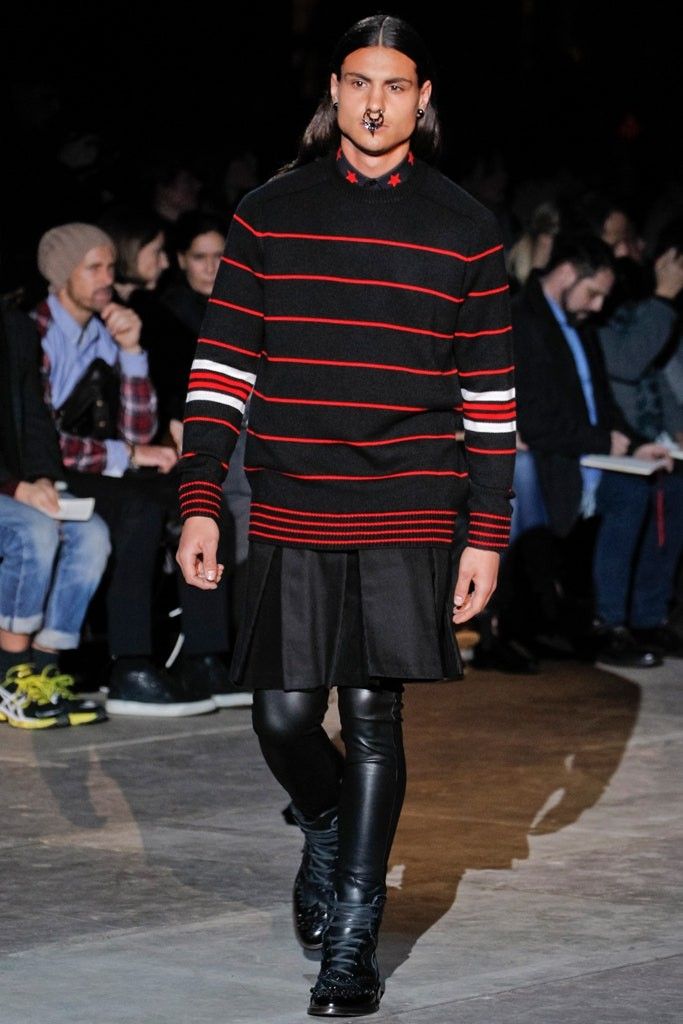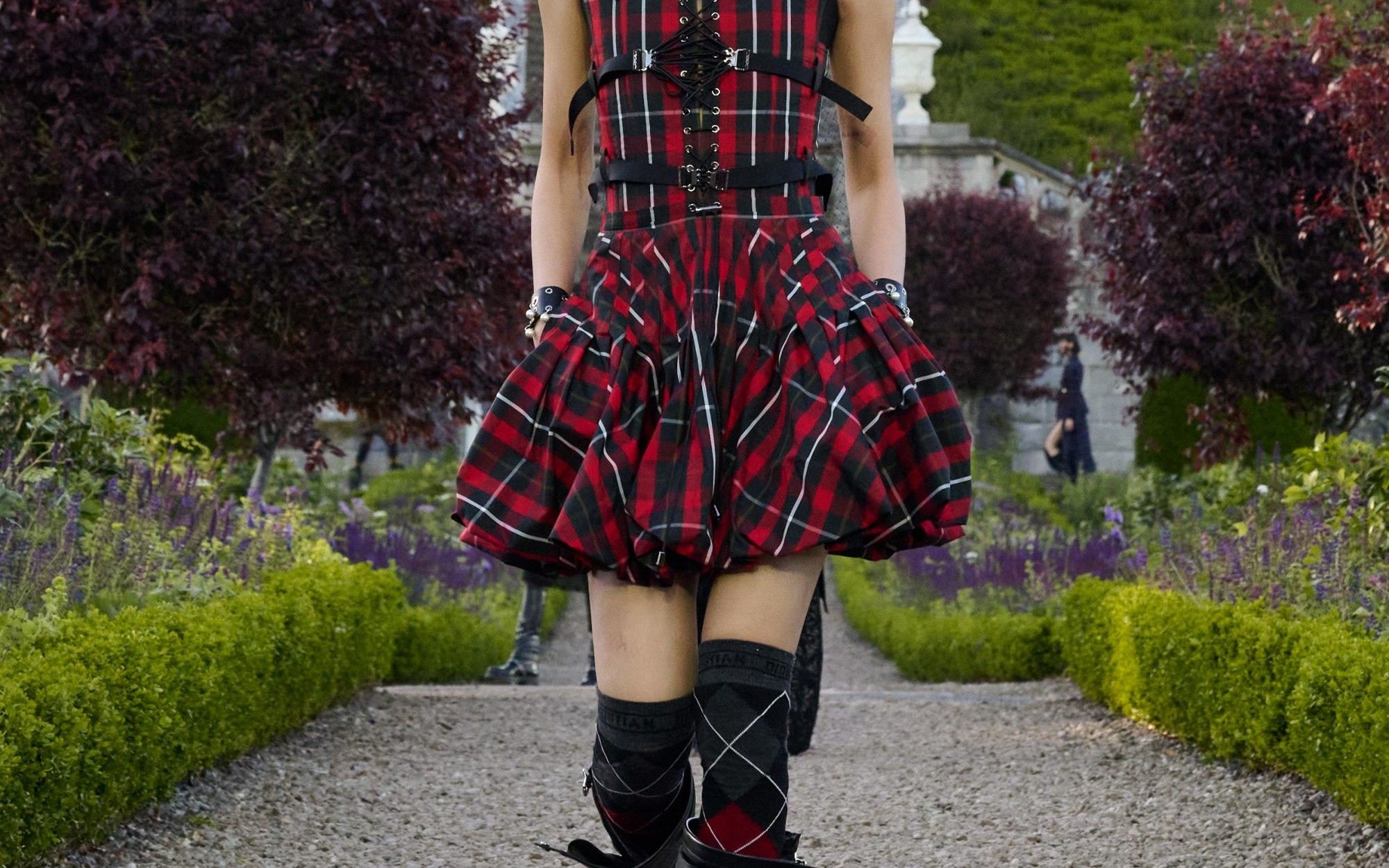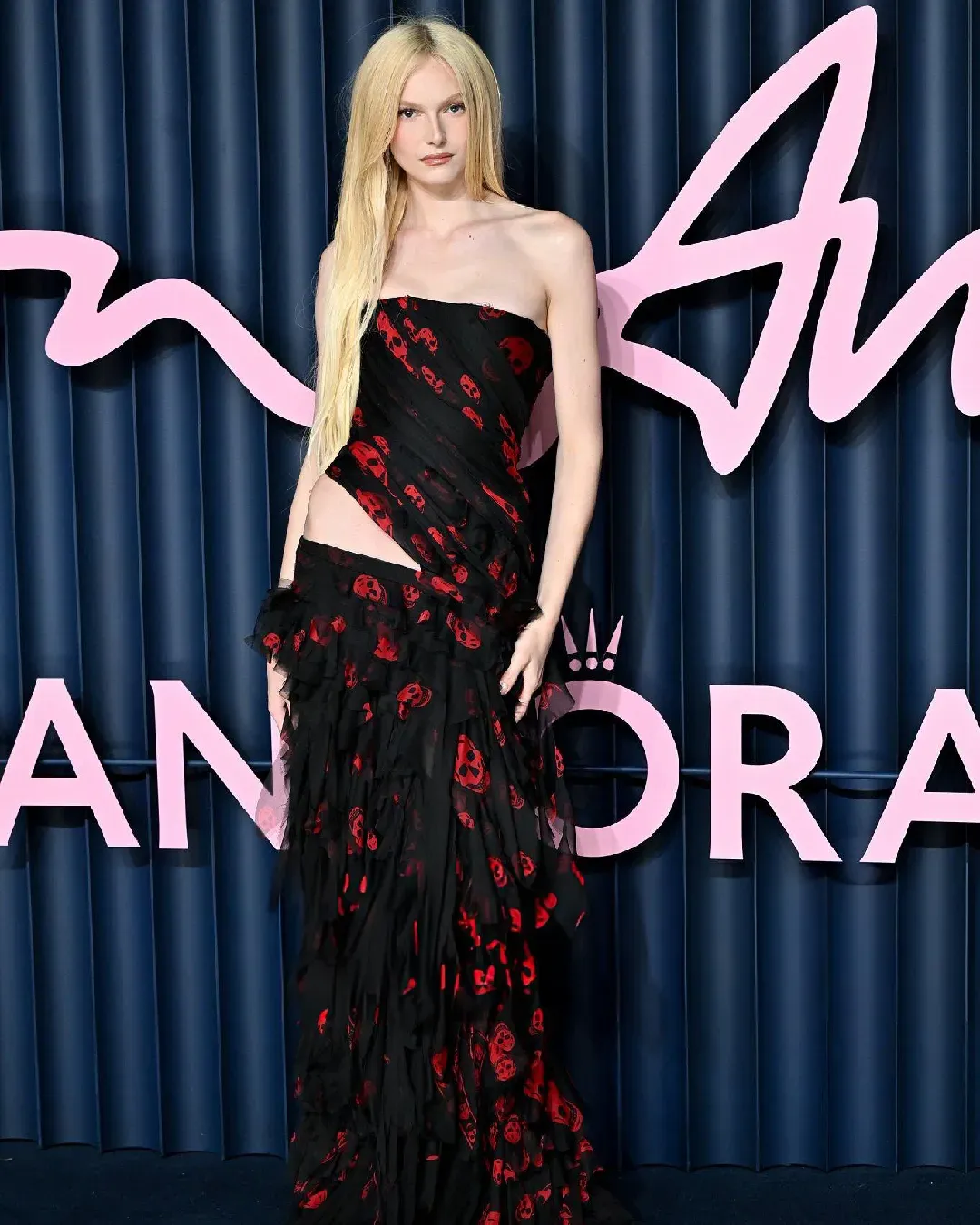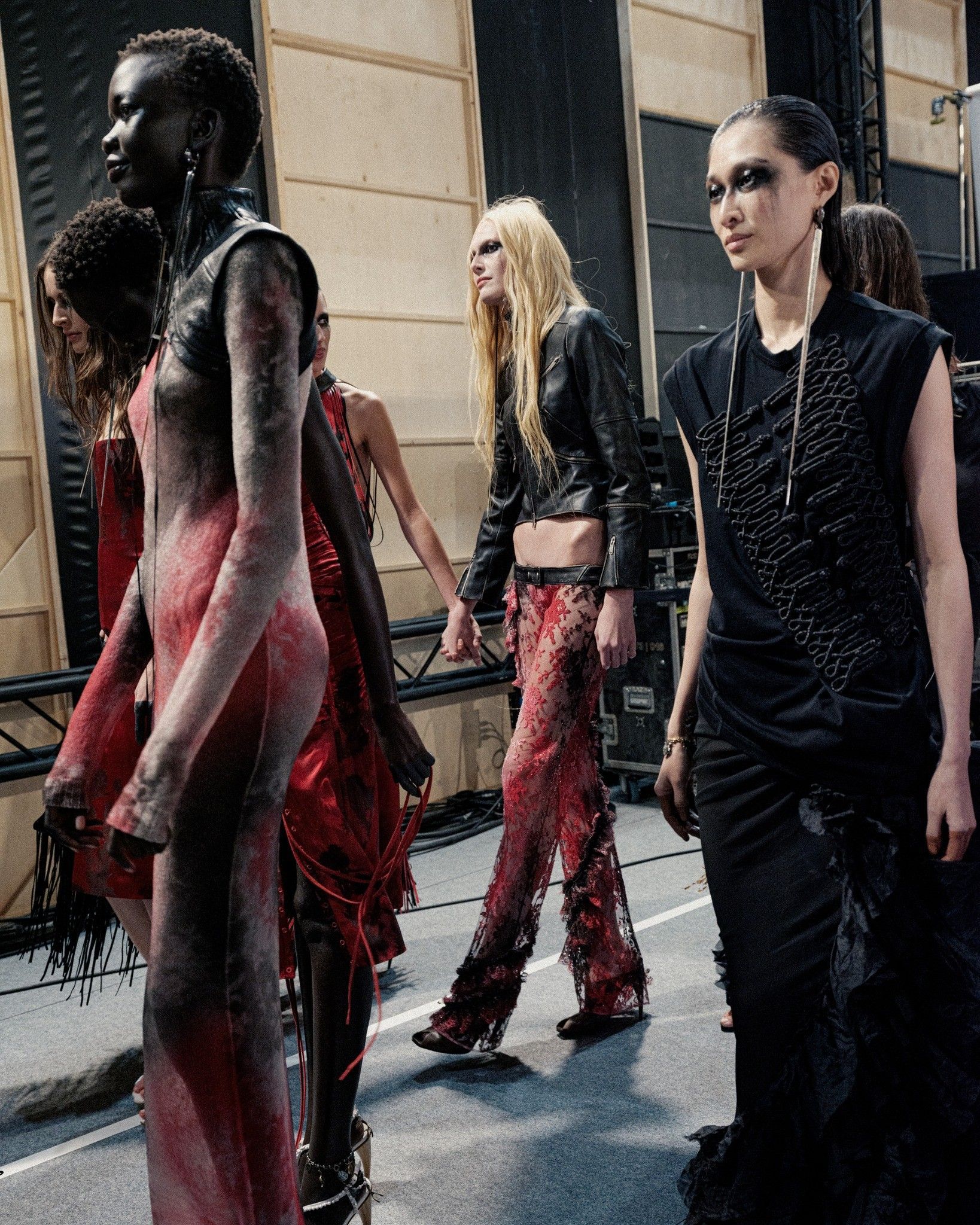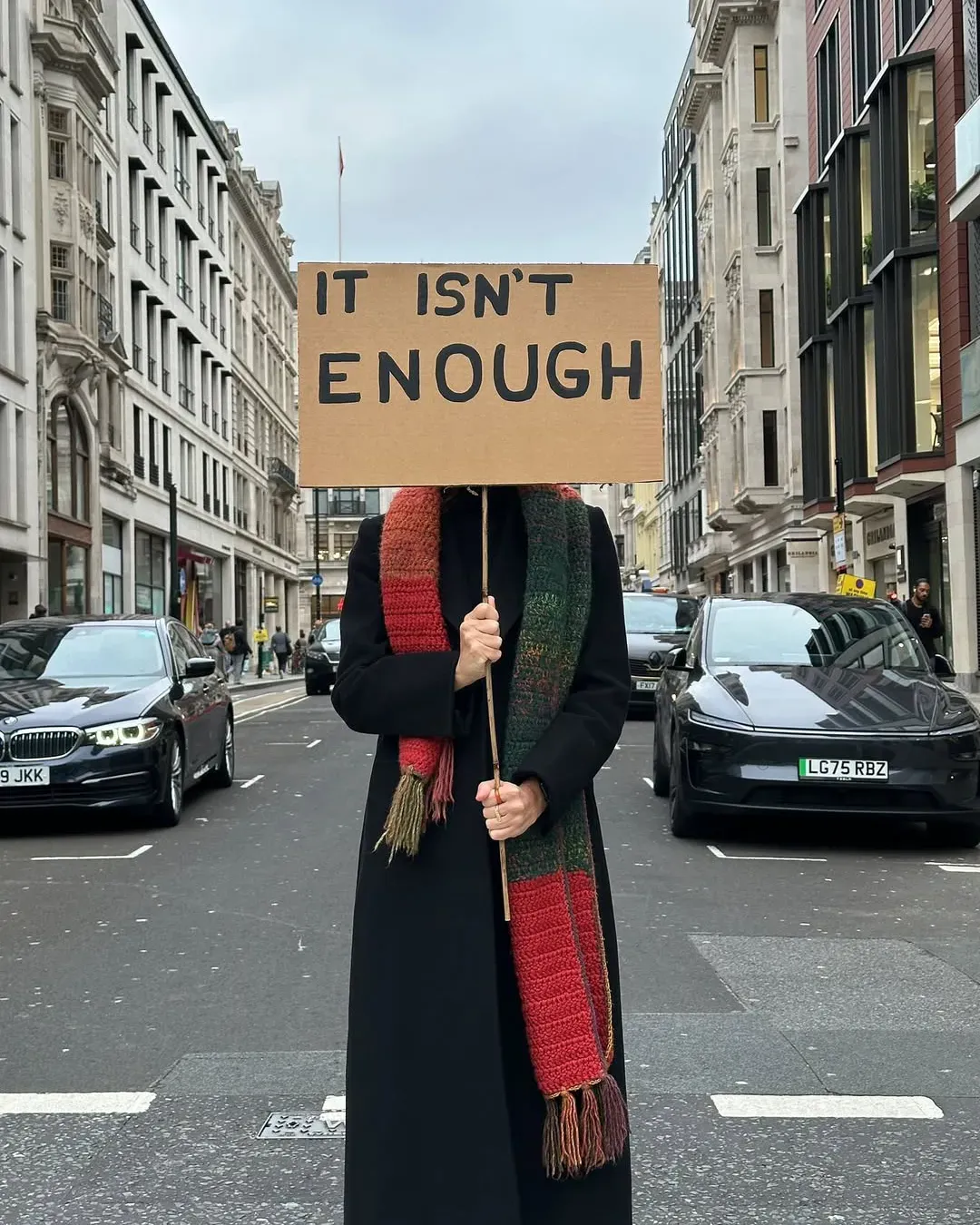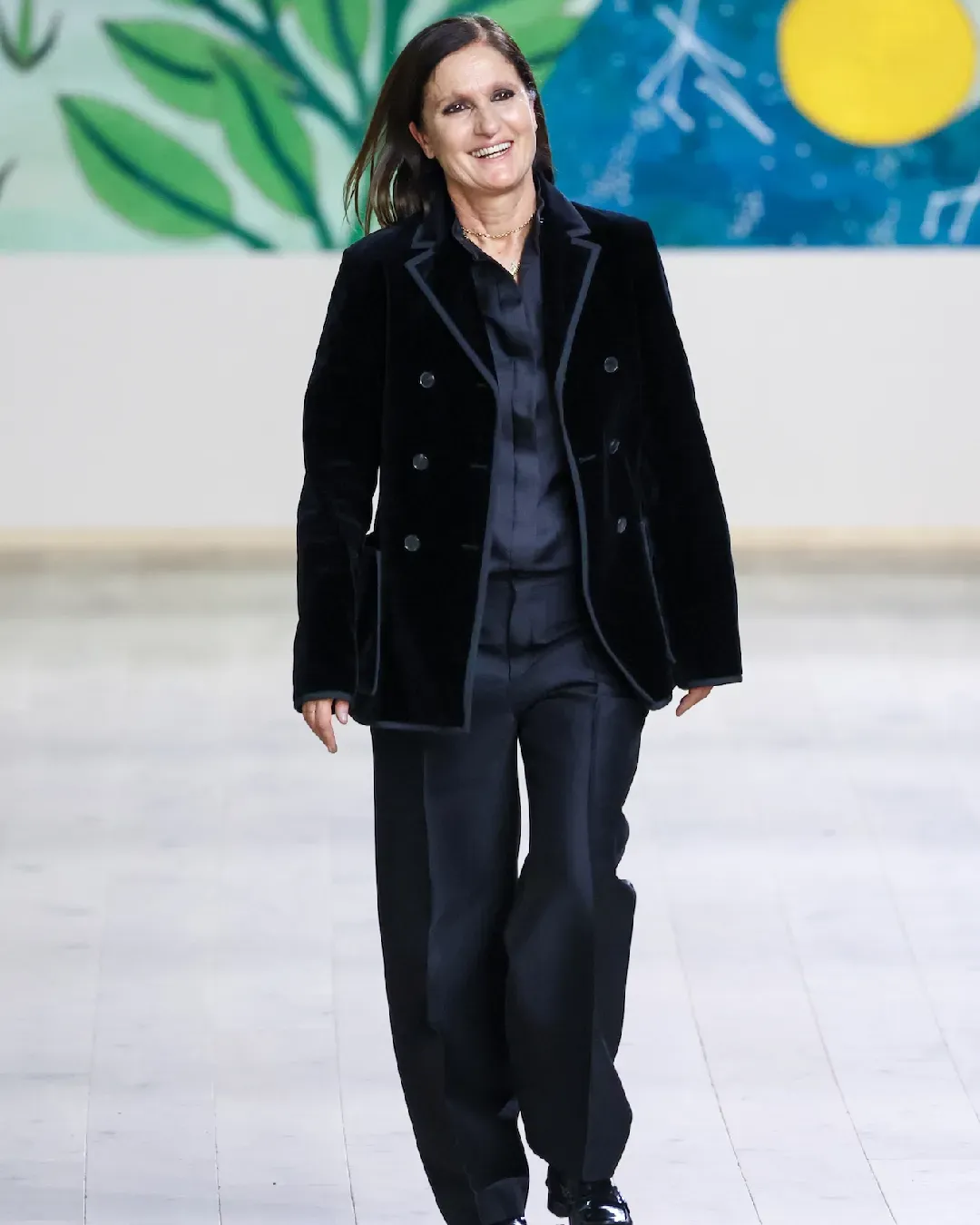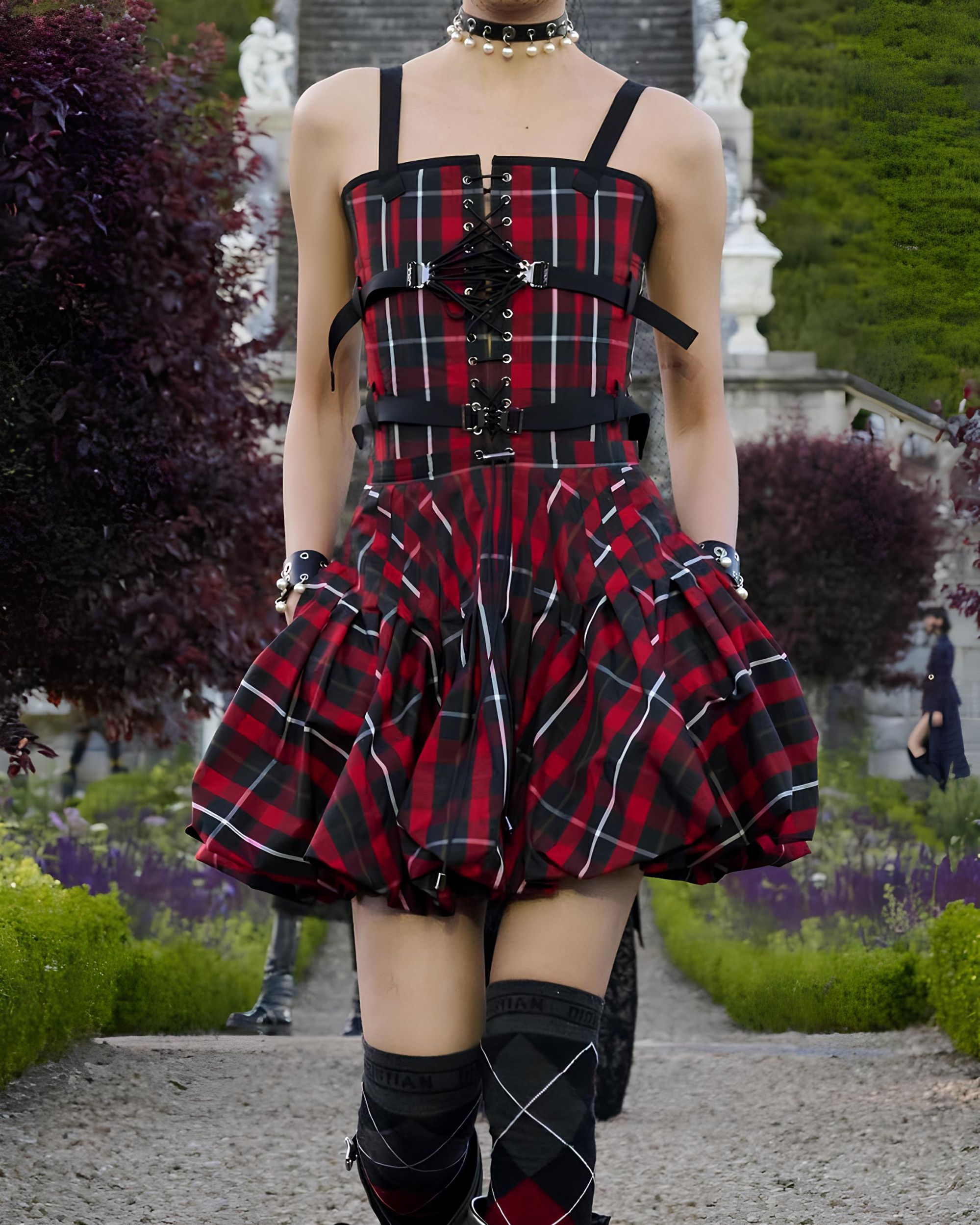
How the kilt recaptured the catwalks When fashion goes to Scotland
The Resort 2025 show that Dior presented yesterday at Drummond Castle in Edinburgh highlighted the brand's connection to Scotland, historically a place of production of the best wools and cashmeres in Europe, by presenting a collaboration with young Scottish designer Samantha McCoach of Le Kilt. McCoach's designs, rooted in the national tradition and inspired by kilts created by the designer's grandmother, represent an interesting reinterpretation of the traditional Scottish kilt that Maria Grazia Chiuri, in her search for local craftspeople to include in her show, has put back into the spotlight. The collection featured several of these kilts, made of specially woven tweed rather than the traditional tartan, which are meant to embody the raw essence of the highlands and their colors. Furthermore, besides the indie brand Le Kilt, Chiuri collaborated with other renowned local craftsmen like Harris Tweed, Johnstons of Elgin, and Esk Cashmere, as well as Robert Mackie. Nevertheless, the kilts (which have continuously appeared and reappeared on the runway in recent years) are of the most interest not only because the designer is young, independent, and locally focused, but also because the garment sits perfectly at the center of a contemporary zeitgeist where genderless fashion, preppy style, love for local craftsmanship, and the quest for authenticity in tradition intersect. It is no secret that the fascination with kilts in fashion has lasted for generations thanks to designers like Vivienne Westwood or Alexander McQueen, who had a Scottish father, or more recently with Scottish designer Charles Jeffrey, who has always drawn inspiration from his heritage.
The kilt, or fhéilidh Mór, has deep roots in Scottish history. The form of kilt we know today originated in the first quarter of the 18th century and derives from the "great plaid" (fhéilidh Mór), a garment worn by Scottish Highlanders since the 16th century. Initially, this great plaid was a long piece of woolen fabric wrapped around the body and secured with a belt, with the upper part draped over the shoulders. The evolution of the modern kilt, known as the "small plaid" (feileadh beag), is attributed to Thomas Rawlinson, an English industrialist who, finding the belted plaid cumbersome for his foundry workers, reduced it to the more practical lower part. This new design quickly became popular for its convenience. After the failed Jacobite uprising of 1745, the Diskilting Act banned the use of the kilt to suppress the cultural identity of the Highlands. However, traditional clothing was preserved in the Highland regiments of the British Army, who continued to wear the kilt. In the 19th century, the kilt experienced a romantic revival, thanks to figures like King George IV and Queen Victoria, who promoted the kilt as a symbol of Scottish identity. During this period, the kilt transformed from a practical garment to a decorative costume. By the late 20th century, young Scots rediscovered the kilt, adapting it for everyday and contemporary use, while popular films like Braveheart (as well as more recent films and series like Outlander and Brave) increased its international appeal. Today, the kilt represents a symbol of cultural heritage, but its meaning has layered to accommodate new modern nuances.
Now, if we interpret the kilt as simply a skirt with a tartan pattern, its presence in fashion is a kind of grand river—vast as the presence of plaid pleated skirts. But if we were to narrow that definition to true kilts, somehow tied to the Scottish imaginary, their journey on the runways began in the '90s and early 2000s with designers like Vivienne Westwood and Alexander McQueen. Already in 1984, Jean Paul Gaultier (a great lover of kilts) built a collection around it. But it was Westwood, specifically for FW88, who collaborated for the first time with Harris Tweed, a historic tweed producer who will also be present at today's Dior show, inaugurating a long-standing relationship with the company. The collection is often credited with revitalizing tweed in fashion (in addition to tailored suits, it was used mainly in Chanel's suits), giving new impetus to its production. The kilt also returned in Westwood's FW93 collection in a memorable look worn by Linda Evangelista covered in Lochcarron of Scotland tartan. In response (almost literal) to Westwood, Alexander McQueen shocked the entire industry with the historic FW95 collection, dedicated to Scotland and entitled Highland Rape, and then again with the FW97 Givenchy Haute Couture, Eclect Dissect; in the other historic FW98 show of his brand, Joan, and then again in The Overlook, The Man Who Knew Too Much, Widows of Culloden, The Girl Who Lived in the Tree. An important note to make here is that already from the '70s the Royal Stuart tartan, until then a symbol of aristocracy, was taken up in a subversive version by punks who tore and distorted it, creating an association that, also thanks to Westwood and McQueen, still lasts.
Other notable appearances of the kilt were in Comme des Garçons FW00 and D&G FW08, the diffusion line of Dolce&Gabbana that at the time had its own show. An interesting reinterpretation and often cited as a reference was Dior Homme FW04, a show that closed with several male looks featuring long tartan pleated skirts, which Karl Lagerfeld famously wore for the finale of Chanel's SS05, a look that was then referenced by A$Ap Rocky for his Met Gala 2023 outfit.
A$AP Rocky referencing Karl Lagerfeld wearing Dior Homme by Hedi Slimane kilt pic.twitter.com/KBFcJgCCA9
— (@headyslimane) May 2, 2023
More traditional were other brands, such as Chanel, which used kilts in its Pre-Fall 2013, and almost all the big names in fashion included a similar skirt in their women's collections at various times. In those years, however, it was Kanye West who brought the kilt into the men's clothing market, famously wearing a pleated leather kilt by Riccardo Tisci for Givenchy FW12 during his Watch the Throne tour in 2012. Despite criticism, West defended his choice, emphasizing the historical associations of the kilt with warriors and inadvertently addressing the garment's gender fluidity connotations. Today, kilts are celebrated for their gender fluidity. Almost a decade later, Virgil Abloh embraced this concept by incorporating kilts into the Louis Vuitton FW21 collection, mixing them with cowboy boots, suits, and motorcycle jackets.
Recently, on the front of young designers, the duo Chopova Lowena has created a series of skirts that have become quite famous, inspired by kilts, adorned with pins, and crafted by mixing tartan with Bulgarian fabrics, while Charles Jeffrey of Charles Jeffrey LOVERBOY has consistently showcased kilts in his collections for a decade, praising their ability to help people explore gender-neutral clothing from a design standpoint.










































